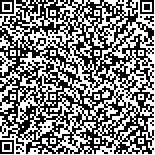On Relationship between SARS Epidemic and Weather Conditions in China
- Article
- Figures
- Metrics
- Preview PDF
- Reference
- Related
- Cited by
- Materials
Abstract:
The correlation between the daily number of new cases and the meteorological conditions at the same or preceding period when the SARS broke out in the main epidemic areas of China (Beijing, Hebei Province, Hongkong, Taiwan, and Guangdong Province) from the March to May of 2003 is comparatively analyzed. Combined with the analysis of the climatic background from November, 2002 to May, 2003, it is revealed that (1)SARS virus must grow and spread within a certain range of temperature (14—28℃),and the higher or the lower temperature is disadvantageous;(2) within that range, the daily number of new cases mainly has a negative correlation with the temperature (mean temperature, maximum temperature, minimum temperature and daily range), rainfall and relative humidity, and the correlation coefficient of the daily number of new cases with minimum temperature is the biggest; (3)the meteorological conditions for preceding seven-day period have greater impacts on the occurrence of SARS than the present conditions do;(4)all the epidemic areas have undergone a lasting and severe drought. In conclusion,a certain temperature of 20℃ or so and a lasting drought are advantageous to the growth and spread of SARS virus.
Keywords:
Project Supported:
Clc Number:


Mobile website









